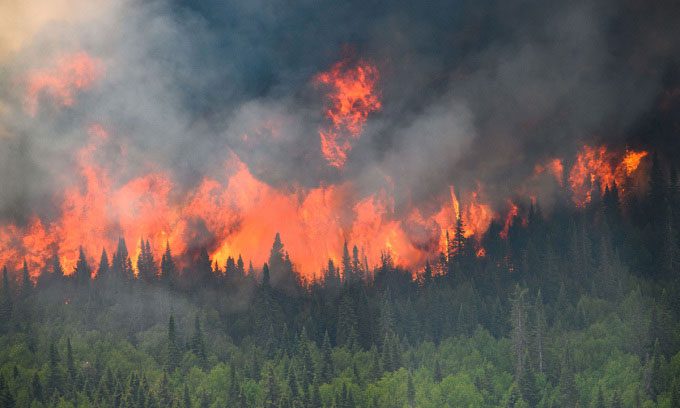The Earth is approximately 4.54 billion years old, but according to fossil evidence, fire only appeared a few hundred million years ago under suitable conditions.
The Earth is the only planet known to have fire. While there may be volcanoes erupting hot magma on the surface of Venus, the hottest planet in the Solar System, fire has never been observed there. Mercury, Jupiter, and any other planets in the Solar System and beyond have also never experienced fire.

Wildfire in Canada June 2023. (Photo: Reuters).
In fact, for a long time in Earth’s history, fire did not exist. It took billions of years for the conditions on our blue planet to become suitable for fire to emerge. The first organisms on Earth lived in a world without fire for longer than most people realize. Volcanoes can create “fire fountains” similar to those on Jupiter’s moon Io, but these are magma being forced up and ejected through vents, not actual fire.
About 2.4 billion years ago, the Earth’s atmosphere was likely a thick cloud of methane—resulting from the emergence of bacterial life on the planet. Then, the Great Oxygenation Event occurred, where ancient cyanobacteria began producing energy from sunlight and releasing oxygen into the atmosphere. It was here that molecular oxygen began to accumulate in the atmosphere for the first time, although still not in sufficient concentrations for combustion to occur. The Great Oxygenation Event may have pushed the Earth into a state of deep global freeze, as the increased oxygen destabilized methane and collapsed the greenhouse effect. The Earth became frigid and devoid of fire.
For the combustion of plants to occur, the oxygen level in the atmosphere must be above 13%. However, if the oxygen level exceeds 35%, fire will burn so intensely that forests cannot grow and sustain themselves. Plants become increasingly flammable as oxygen increases, and 35% is a threshold; exceeding it would make biomass too prone to ignition and burn so fiercely that it would be incompatible with sustainable forest development.
About 470 million years ago, during the Ordovician period, the first land plants—true mosses and liverworts—produced more oxygen, eventually reaching sufficient concentrations to ignite. Scientists obtained the first fossil evidence of fire on Earth: charcoal samples found in rocks dating back approximately 420 million years. However, with fluctuating oxygen levels, widespread wildfires did not occur until about 383 million years ago. Since then, many intense wildfires have ravaged the Earth.




















































